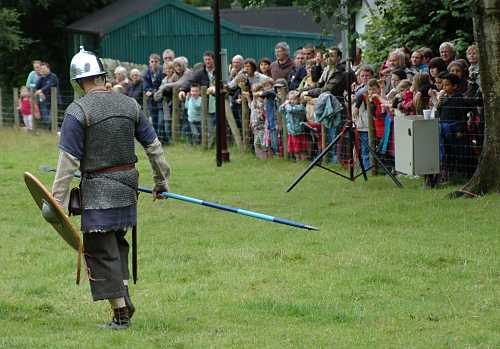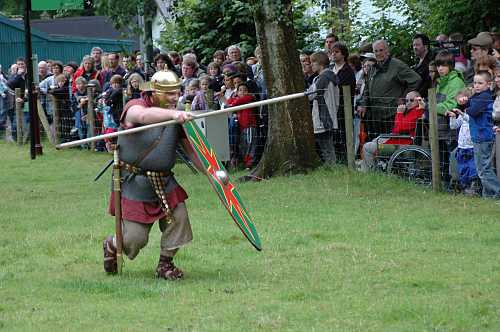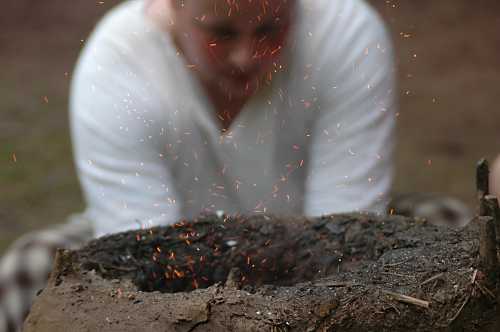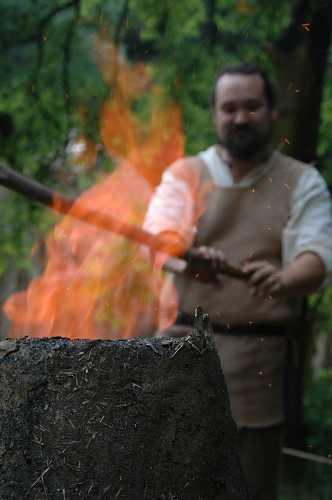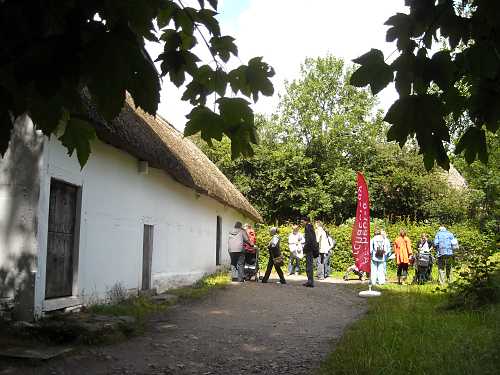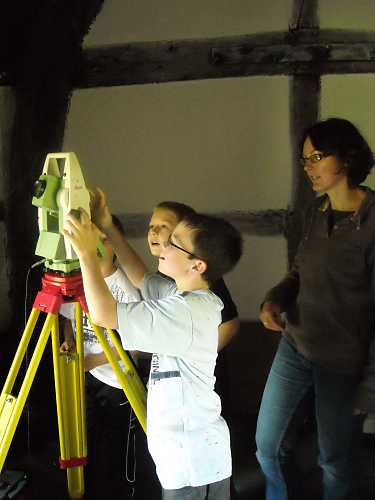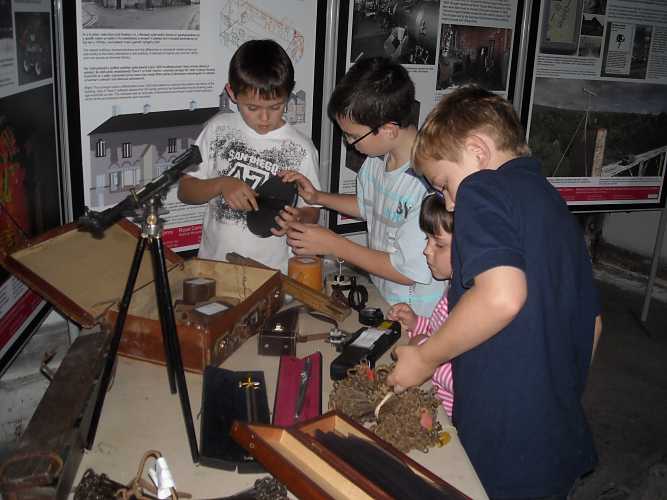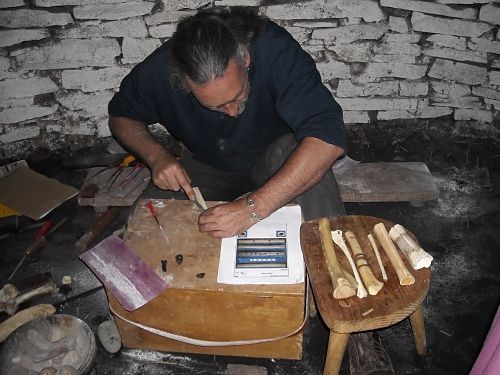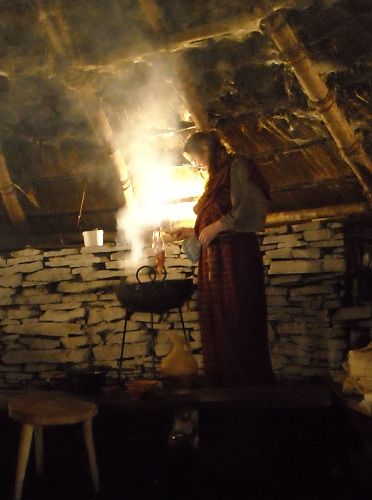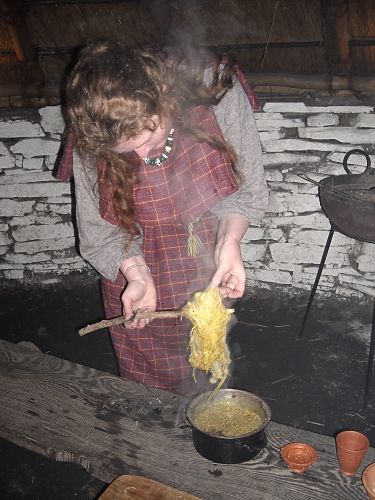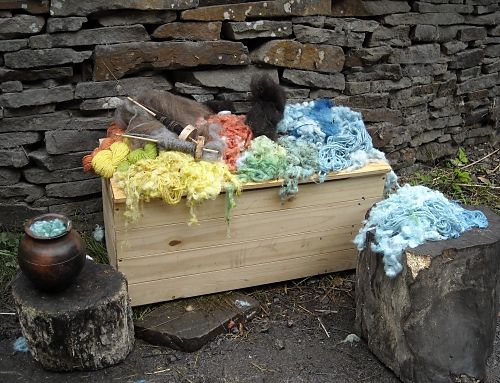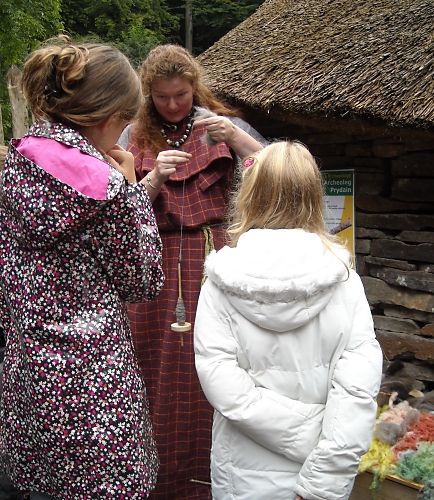A big day in the Celtic Village
, 1 Awst 2009
Festival of British Archaeology 2009
This weekend is the grand finale of the Festival events, and it started dreadfully. Torrential rain all night and no let-up until eleven o’clock, but much happened before then.
First thing in the morning The Vicus, anamazing Iron Age / Roman re-enactment group, arrived in force and took over our Celtic Village and the grounds around it. Our wood shelter became an armoury, the roundhouses were taken over for cooking and crafts, and outside the village our old furnace was fired up and used to smelt iron ore.
Things really got under way once the rain had cleared and the ground started to dry. Then it was a continuous stream of visitors for the rest of the day.
For me the highlights were:
- the trimmed down combat display where the Vicus’s British warriors and Roman soldiers showed off their equipment and demonstrated the various merits of a range of spears. It was a trimmed down display because the rain had left things too wet underfoot for full-scale combat. But the forecast is good for the rest of the weekend, so tomorrow’s performance should be the full extravaganza.
- watching the bloom come out of the furnace around 4:30. The Vicus’s blacksmith has yet to pass judgement on the results, but they certainly looked pretty good. And when one considers that things only really got started around midday they seemed almost miraculous.
So tomorrow is the big one. In the Celtic Village we have a repeat of all of the above (with bronze casting substituted for iron smelting), and the festival will be brought to a show-stopping conclusion with a reenactment of a Roman cremation cemetery. Fingers crossed the weather stays with us.


